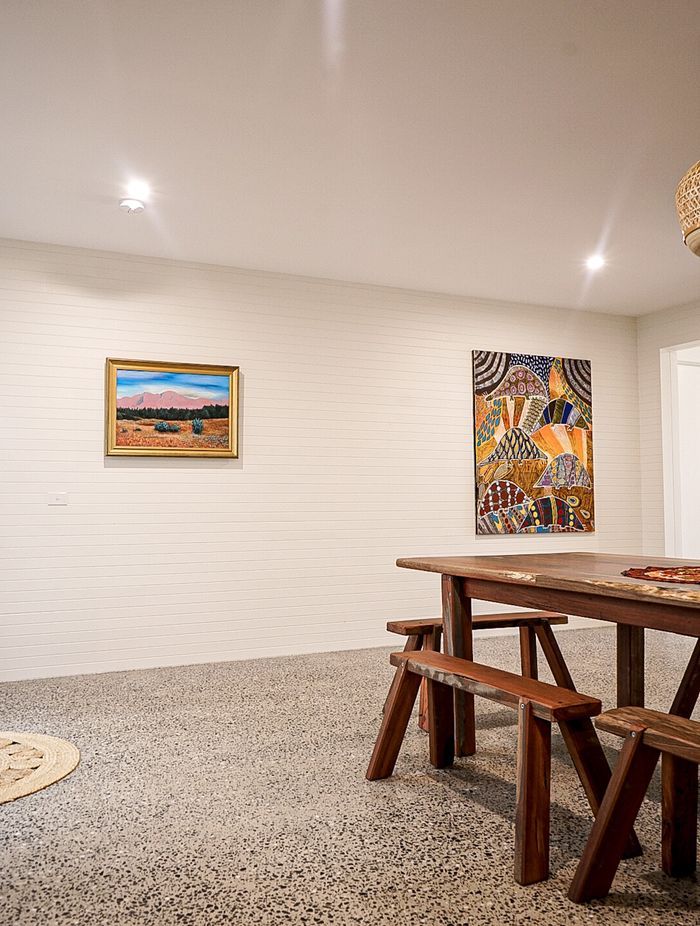Is microcement or polished concrete the right choice for your next project?
Written by
19 March 2024
•
5 min read

Microcement and polished concrete have increasingly become popular materials when designing Australian homes. Brayden Warhurst from Raw Surfaces sheds light on what to consider, the different options available and whether these materials will suit your clients' needs.
Microcement and polished concrete are two of the most sought-after materials for Australian properties. From flooring to ceilings and kitchen and bathrooms, both have soared in popularity due to their durability, aesthetic appeal and low maintenance qualities. As such, they are often strong contenders for architects and designers when planning a space.


Education is key when deciding on which material to use
Based in the Mornington Peninsula in Victoria, Raw Surfaces specialises in installing microcement and polished concrete. With a mission to transform floors, walls and ceilings into functional pieces of art, the team work directly with architects, designers, builders and aspirational homeowners.
Raw Surfaces Director Brayden Warhurst says that while both materials are suitable for all kinds of properties, choosing between microcement and polished concrete largely depends on the client's requirements and the project context.
"Microcement is suitable for people who prefer a no aggregate look as it brings a more predictable and reliable colour than concrete. With polished cement, your surface is natural and incredibly hardwearing. We are limited with what we can offer our clients as it's determined by the quality of the concrete and the pour, so it works best with spaces being made from scratch, where we can guide the process to help get you the most desirable finish.”
Brayden adds that because these materials have soared in popularity in recent years, the terms "microcement" and "polished concrete" have become buzzwords. Architects, designers and clients would, at times, select these materials for their projects with little research done prior.
The challenge is that when an installer like Brayden gets added to the development process, the correct information needs to be conveyed so he can deliver quality materials that are the right fit for the project. Like him, designers and architects always work closely with the client, so it's essential for them to have a clear understanding of the client’s needs from the beginning so everyone involved in the project is unified under one clear vision.
The best way to achieve this is through extensive research on the materials being used, as understanding the context of the materials ensures clarity for all stakeholders involved. To accommodate, Brayden offers a solid supportive "hand-holding process" during the development, working closely with architects, designers and homeowners early on to understand their needs and help them find the right fit for their project.
"When people are aware of the ins and outs of the material from the get-go, all the quirks, all the features, what's perfect, imperfections – all that sort of stuff – when they're actually aware of it, and it comes up on a project, they often don't mind."
In other words, if everyone in the process understands the purpose of the materials within the project context, the likelihood of miscommunication, re-dos and delays is significantly decreased.

What is the main difference between microcement and polished concrete?
"Microcement and polished concrete are both smooth to the touch. But polished concrete is harder wearing – there's nothing to ever scratch up or be off the surface. Whereas microcement is a lot more design-friendly in terms of colour, tonality and individualism," Brayden explains.
He reiterates the importance of understanding the context of the project, as the client's lifestyle plays a huge role in which material is best suited.
"[The] number one thing you should be thinking about is how this surface is going to wear and tear; these are the biggest factors that come into it," he says.
"Take office chairs, for example. [They will] constantly be abrasive over a surface when they move, wearing down a surface. But if you're using polished concrete, there's nothing to wear down."
Brayden adds that for high-traffic areas, especially if it's a place where children and pets will often visit, polished concrete is especially preferred over microcement due to its long-lasting strength and durability.
Contrary to popular belief, polished concrete is not a flooring installation but a fabrication process that transforms raw material into a finished surface. The method involves enhancing the concrete's chemical makeup with densifiers, then refining the surface with grouts, cutting and polishing resins. Polished concrete aims to create a finished surface rather than installing external finishes over another finish like carpet, tile or timber.
On the other hand, microcement features multiple thin layers of cement with special polymers to increase crack resistance, durability, adhesion and stain resistance. The layers of concrete make it an excellent choice for bathrooms, kitchens, living rooms, floors, ceilings and more. But its biggest attraction is its customisability. You can choose the style, texture and colour of your micro-cement finish to best suit your interior design needs.
"[Microcement and polished concrete are] both architecturally stunning materials that are suitable for most situations, homes and offices. They're going to bring subtle elegance to every single space, but they're only right for some people. So research is key."
Learn more about Raw Surfaces on ArchiPro.